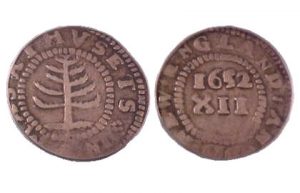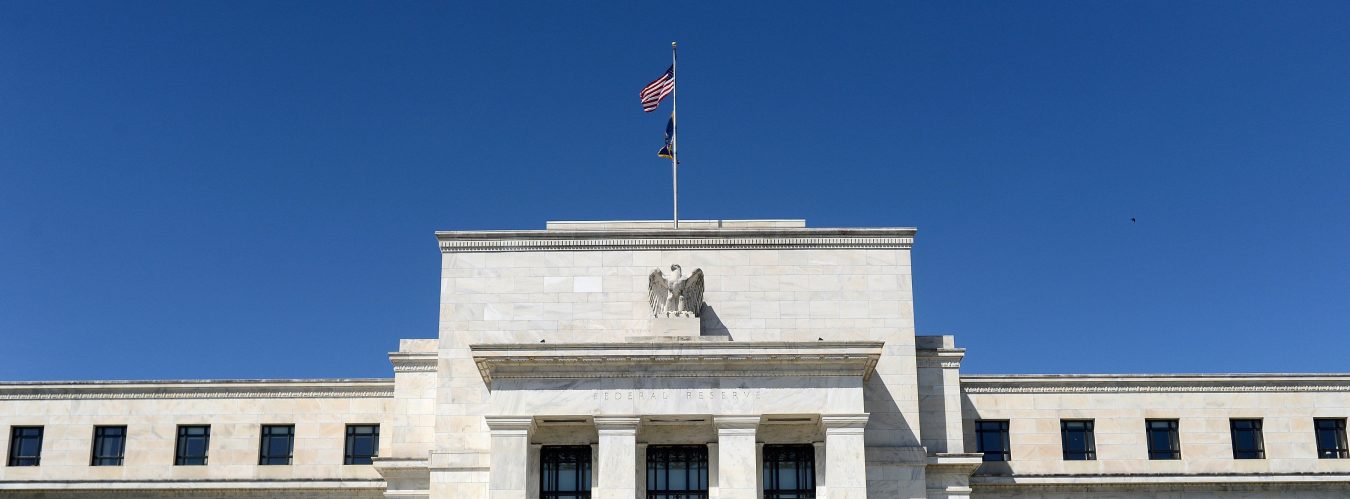“First, it was considered, that in every commonwealth, it is necessary to have a certain standard of money. For no common wealth can subsist without contracts, and no contracts without equality, and no equality in contracts without money.” [1]
Overview:
Monetary sovereignty is the power of a given state to have complete control over its currency. This currency, which can also be referred to as the ‘legal tender,’ is often controlled, regulated, and distributed by a central bank, such as the Federal Reserve (the Fed) in the United States, or the European Central Bank in terms of the European countries who use the Euro as their currency. Obviously, the states within the Eurozone are autonomous and sovereign, and have full control over their peoples, but their sharing of a currency unites them in a way that is, at times, unclear. They are sovereign, but they also choose to be a part of this currency. A lot of the history with monetary sovereignty struggles began with the opposite dilemma, a specific place creating their own currency, without sovereignty.
Monetary sovereignty became increasingly important during the colonial era when Great Britain had colonies all over the world. They struggled with maintaining their currency both within their own country and in their colonies, which called their authority over these territories into question. In 1605, “it was resolved that as the king by his prerogative may make money of what matter and form he pleaseth, and establish the standard of it, so may he change his money in substance and impression, enhance or debase the value of it, or entirely decry and annul it, so that it shall be but bullion at his pleasure.”[1] which gives the king the power to do whatever he wanted with the currency. This then brings the notion of trust between the people and the leader into play, because if the king has power to do whatever he pleases, the people need to trust that he or she will act rationally. Without trust in their ruler, they will never entirely trust the value of their currency, because its susceptible to an irrational ruler.
In addition to needing consistent trust in one’s leader, it is also important to not go against any of the specified powers of that leader. A lot of the colonies that attempted to have their own mints or create their own currencies struggled with this because it went against the king’s prerogative. The royal prerogative was an important concept within the monarchy because it was the royals exclusive claim to power. So to go against the royal prerogative was problematic because it in essence meant you were going against the royal themselves, their entire monarchy.
Since a majority of the examples of struggles with monetary sovereignty come from Great Britain, specifically during a time in which their monarchy was especially strong, it raises the question about the relationship between the monarchy and the entire ideal of monetary sovereignty. And perhaps the question of, if the monarchy thwarted the entire concept of monetary sovereignty itself. That is to say that, had Great Britain not been a monarchy, would they still have faced these same struggles with maintaining their power over their colonies? Because the people put so much power into this one individual, their trust was not built or inspired by this man or woman, but expected.
Case of Ireland:
The first problem we encountered between the crown and their colonies regarding monetary sovereignty arose in Ireland in the early 1600s. The main issue was that the correlation between Irish currency and English currency was so intertwined for so long. Eventually, however, Great Britain debased Irish currency so it was essentially the same, in terms of fineness and weight, as theirs, but worth a quarter less. Which ties back to the notion that, by creating their own form of currency, the people of Ireland were going against the King’s prerogative. In Swift’s letter to the people, he actually encourages this, saying that, “By refusing to receive his dross for sterling, we dispute the King’s prerogative, and are grown ripe for rebellion, and ready the shake the Dependency of Ireland upon the crown of England”[2] So he is implying that that actually was the intention of the people of Ireland when they refused the new currency. Their issues were not solely about the value of the money, but the fact that the king had made a decision on their behalf, and now was as good a time as any to rebel against him Swift’s ‘open letter to the people’ he makes some very compelling arguments:
“So thing King hath a prerogative to coin money without the consent of Parliament. But he cannot compel the subject to take that money except it be sterling gold or silver; because herein he is limited by law … now here you may see that the vile accusation of Wood and his accomplices, charging us with disputing the King’s prerogative by refusing his brass, can have no place, because compelling the subject to take any coin which is not sterling is no part of the King’s prerogative.”[3]
In his letter he relates the power of the king to wage war, unapproved by parliament, and in that situation the king must fund the war on his own dime, since it does not have parliamentary approval. By this same token, the King, without parliament’s approval, cannot force anyone to accept a form of payment that is not sterling, and therefore could not force the Irish to accept the brass money, because it had minimal intrinsic value.
Money eventually modernized to go without intrinsic value, but in the 1600s they were not at a point where the masses were comfortable with that concept. In The Querist, published in the 1730’s, Berkeley raises that exact point, asking “ 23. Whether money is to be considered as having an intrinsic value, or as being a commodity, a standard, a measure, or a pleade, as is variously suggested by writers?”[4] knowing where the value of money is derived from was clearly an important aspect of people’s trust, and thus, usage of money. Even beyond that, many Irish people did not understand why an Irish mint couldn’t make sterling coin, as opposed to some new, intrinsically worthless coin. This was at a time before fiat money was accepted, if even used at all, so the Irish concern regarding it was understandable.
Case of Massachusetts:
Massachusetts had a comparable issue with the crown, because after an expedition into Canada, they needed payment for their military, but the Crown was too entrapped in the civil war happening in their own country, so Massachusetts had to come up with a solution of their own. They began minting their own coins, printed with the year, and “Effectively, the money was supported only by its acceptance for tax payments”[5] which was the main issue because by making its money legal tender for its debts they were violating the royal prerogative. The acceptance of money as legal tender is fundamental in the definition of monetary sovereignty, and especially given that the Massachusetts mint paid no homage to the King, they were essentially exercising a form of sovereignty, that was not well received in England. “The [main] complaints [from England] referred to the coins debasement, the absence of the king’s portrait or name, and- more importantly- the legal tender status. Only the king could fore english subjects to accept certain objects in debt settlement.”[6] The Massachusetts mint money was effectively ‘money’ except in the eyes of the crown, because they had never given it that status. But, because residents of Massachusetts were accepting it as payment, so they were, in action, making it legal tender and practicing monetary sovereignty.

One of the important aspects that the Massachusetts example brings to light, is the idea of trust between a government and its people, and the role that trust plays in a populations confidence in their currency. Massachusetts was the first place where we saw a form of fiat money, that had no intrinsic value, and was not backed by land or anything else of value. Essentially, the currency that they, somewhat forcibly, distributed, only had value because it was accepted as a form of payment for taxes. The currency that they invented in 1690 had no actual value except for the fact that their government said it had value, which is a the first example of the fiat money that we so commonly see today. The notion of trust comes in, because had the Massachusetts population not trusted their government, perhaps on the aspect that they would accept this money as payment in the future, then essentially their claim that the money was a value, did not hold any power in the minds of the people, and was therefore not of value.
Monetary sovereignty is a complicated, but important concept that should be considered by historians, politicians, and business people alike. It combines the ideas of value, international discrepancies in both intrinsic and perceived value, governmental trust and confidence. It also marks the beginning of inflated/deflated currencies. To understand these examples is to have a greater perspective into the inner workings of currency, from where it derives value, to why it is widely accepted by the world population.
[1] “The Case of Mixed Money in Ireland (A.d. 1605).” Nicoletta Forcheri, 1 July 2016, nicolettaforcheri.wordpress.com/2016/07/01/the-case-of-mixed-money-in-ireland-a-d-1605/.pg 2
[1] “The Case of Mixed Money in Ireland (A.d. 1605).” Nicoletta Forcheri, 1 July 2016, nicolettaforcheri.wordpress.com/2016/07/01/the-case-of-mixed-money-in-ireland-a-d-1605/.pg 3
[2] Jonathan Swift, Letter to the whole people of Ireland [Drapier’s Letters, Letter IV] (1724) pg 4
[3] Jonathan Swift, Letter to the whole people of Ireland [Drapier’s Letters, Letter IV] (1724) pg 5
[4] George Berkeley, The Querist (1735-7), selections. Pg. 6
[5] Dror Goldberg, “The Massachusetts Paper Money of 1690,” The Journal of Economic History 69:4 (2009) (pp. 1093)
[6] Dror Goldberg, “The Massachusetts Paper Money of 1690,” The Journal of Economic History 69:4 (2009) (pp. 1098

